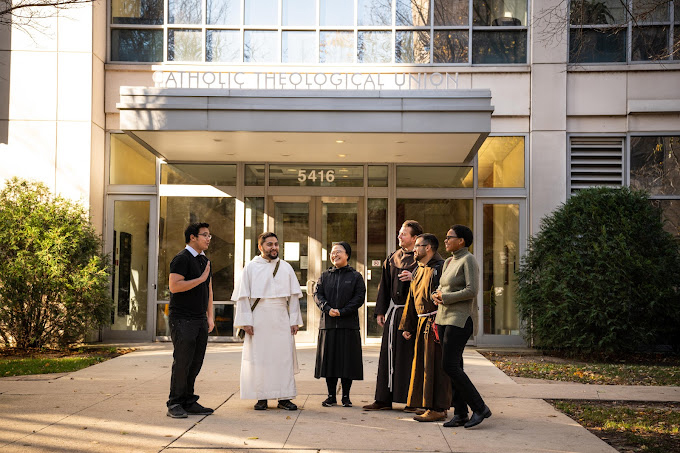Each year, the In Trust Center provides Resource Grants to support schools with matching funds for special projects. This story, by Karen Stiller, is part of a series highlighting initiatives made possible through these grants. Learn more about the Resource Grants program here.
How an In Trust Grant Helped CTU Move from Idea to Prototype for Innovative New Digital Courses
In a South Park-style animated video, a cartoon Jesus wearing a blue sports jersey rapidly heals a line of injured and ill people – offering a playful take on the biblical story of Jesus and the Syrophoenician woman.
“You got me girl,” Jesus responds to the mother in the Bible story, who, of course, has requested healing for her daughter. “Your love is fit as a fiddle now.”
The video ends with an invitation to explore more from the course “Us vs. Them: Theology, Conflict and the Human Brain.”
The video serves as both a trailer and test, a proof-of-concept production from the Catholic Theological Union (CTU) for a series of digital courses. Scott Alexander, Professor of Islamic Studies and Christian-Muslim Relations and director of CTU’s Doctor of Ministry program, leads the initiative. He envisions the courses as “a new standard for excellence in synchronous online theological education with the broadest possible appeal.” Designed to be playful and innovative, the courses aim to blend theology with disciplines across the arts and sciences.
In fact, “fusion theology” is what it’s all about. Fusion theology is a way of interacting with a wide range of disciplines and topics in the arts and sciences, offering rich opportunities for courses that explore just where that interaction takes place.
“We’re trying to meet people where they’re at, and also intrigue people,” explains Alexander. “There’s something about it that sounds interesting. What are we fusing? We were thinking about non-degree-seeking learners,” he adds. “Is there a constituency out there that might appreciate what we have to offer, provided we offer it in a way that is engaging and accessible, and in a way that doesn’t force people to squeeze themselves through entry points that made them uncomfortable?”
The answer, CTU believes, is yes.
The sample video, along with a preview of a prototype website, is a foundational part of a proposal the CTU creative team has submitted to Lilly Endowment Inc. for a large-scale collaborative grant. The material was “based on the grant In Trust [Center] gave us to lay the seedbed for this idea,” says Alexander. With matching funds from CTU, Alexander and his team used the initial support to explore, experiment, and begin refining their vision. The prototype video is a window into what they believe is possible.
Alexander is quick to credit his creative partner, Young Shin, CTU’s Director of Strategic Initiatives and Business Development. “The lion’s share of the credit for the innovative and highly creative format goes to Young Shin, who was the true genius behind all of the production techniques and who literally taught me how to teach in this medium,” he says. It is a medium the team believes has incredible potential for sparking theological conversations in unexpected places and fresh ways.
“We want to involve other people doing fusion theology with other disciplines, and not just neuro-theology like this prototype. We need further funding to do this,” says Alexander.
The In Trust Center’s Resource Grant enabled the team to show what is possible if they are able to secure additional funding.
“We’re so deeply grateful to the In Trust Center. We know that our proposal was probably not conventional in terms of resource grants but the folks at the In Trust Center understood how important risk-taking can be. We were able to use those resources to produce something that has made a difference. It’s the proof of concept that has helped us convince people,” says Alexander.
Focus groups were part of the process. As Alexander notes, “We had generationally based groups and our sweet spot was Gen X and Millennials for sure.”
“People were laughing and giggling, maybe a tad offended, and then they were really curious. One of the questions we asked them was about the concept of fusion theology. And they loved it.”